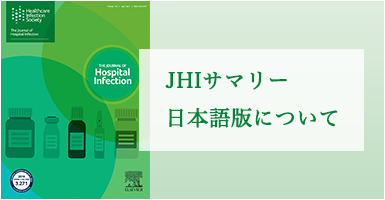集中治療室患者のCandida albicans保菌調査へのmultilocus sequence typing法の使用★
Use of multilocus sequence typing for the investigation of colonisation by Candida albicans in intensive care unit patients
P.R. Cliff*, J.A.T. Sandoe, J. Heritage, R.C. Barton
*The General Infirmary at Leeds, UK
Journal of Hospital Infection (2008) 69, 24-32
大規模教育病院の一般集中治療室におけるカンジダ属保菌率を評価するために、前向き研究を実施した。カンジダ属の保菌は頻度が高く、集中治療室の患者の79%に認められた。カンジダ・アルビカンス(Candida albicans)が最も多くみられた菌種で、患者の64%が保菌しており、カンジダ・グラブラータ(C. glabrata)(18%)とカンジダ・パラプシローシス(C. parapsilosis)(14%)がこれに続いた。検査を受けた職員の多くは、いずれかの時点でカンジダ属を保菌していたが、保菌は一過性であると考えられた。職員の手指から最も多く分離された菌種はC. parapsilosisであり、口腔から最も多く分離された菌種はC. albicansであった。Ca3タイピングおよびmultilocus sequence typing(MLST)法でC. albicansの分子疫学を調査した。MLST法は再現性の高いタイピング法であり、C. albicansの分子疫学の調査に有用な方法であることが判明した。分子タイピングの結果から、集中治療室に流行株が存在しているエビデンスが示され、この流行株は患者および職員から繰り返し分離された。この知見は、入院時の患者が保菌しているC. albicans株の相対頻度の反映である可能性もあるが、集中治療室でC. albicansの水平伝播が生じていることを示唆するものである。本研究は、全身性カンジダ感染症の疫学にとって重要な意義を有する。
サマリー 原文(英語)はこちら
監訳者コメント:
Candida albicansなどの真菌に関する分子疫学的解析方法として、PFGE法では核型を比較するが安定性などに課題を残している。MLSTを用いることで、より再現性の高い疫学調査ができることの意義は大きい。
同カテゴリの記事
Effects of prophylactic use of taurolidine-citrate lock on the number of catheter-related infections in children under 2 years of age undergoing surgery
Pseudomonas aeruginosa intensive care unit outbreak: winnowing of transmissions with molecular and genomic typing
Nosocomial outbreak of extended-spectrum β-lactamase-producing Enterobacter cloacae among cardiothoracic surgical patients: causes and consequences
Factors affecting prevention and control of viral gastroenteritis outbreaks in care homes
Can influenza vaccination coverage among healthcare workers influence the risk of nosocomial influenza-like illness in hospitalized patients?
サイト内検索
アーカイブ
-
2024年
- ・ 1月(24)



